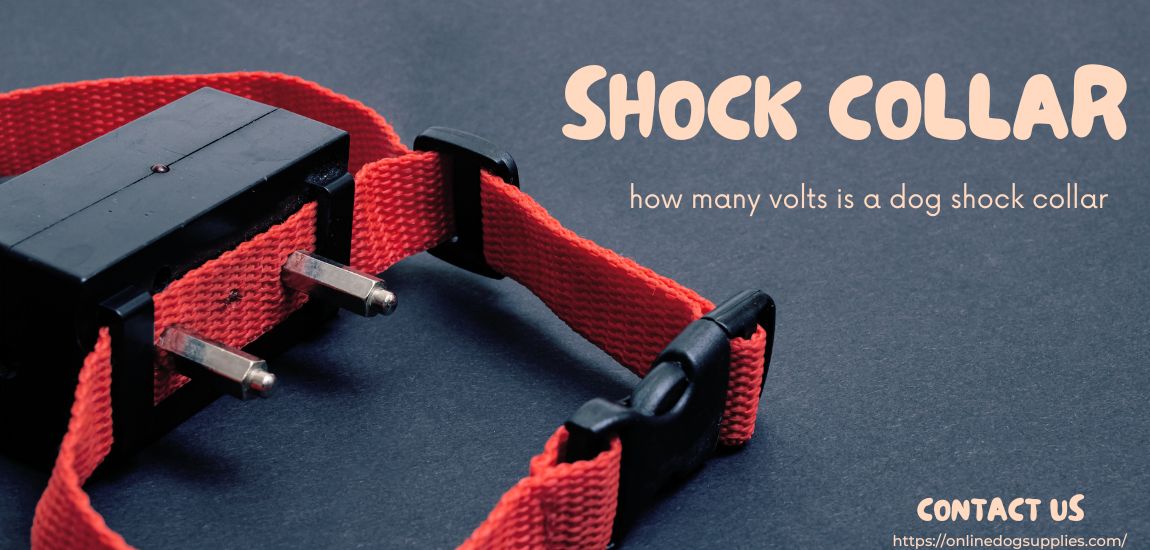With so many dog shock collar options on the market, it’s easy to feel overwhelmed when trying to choose one. A key specification that varies between models is the voltage – but what do those numbers mean? In this post, I’ll break down voltage levels, explain what they indicate, and help you determine the safest options for your pup. Stick with me and by the end, you’ll have a clear understanding of how many volts are in a dog shock collar.
What do Voltage Numbers Mean?
To start, let’s define exactly what voltage measures. In simple terms, voltage refers to the pressure or force of an electric current. The higher the voltage, the stronger the intensity of the shock. Dog collars range anywhere from less than 1 volt up to 6,000+ volts. So what’s a safe level?
Most training experts agree that anything above 6 volts is too intense for canine companions. Their skin and nerves are much more sensitive than ours, so even a low-level shock can feel painful to a dog. Anything over 6 volts increases the risk of accidentally causing harm. That said, lower voltages aren’t necessarily gentler – it’s about using the minimum amount of shock needed versus trying to inflict an unpleasant sensation.
So What Voltage Should You Choose?
If you want the safest option, look for collars advertised as “low-level stimulation” between 1-2 volts. These produce just enough of a static-like zap to startle your pup without hurting or scaring them. 3-6 volts maintain correction ability while still being quite mild for most dogs. Anything 5 volts or under is generally considered appropriate for all but the most bold/stubborn pups.
It’s also important to note that voltage is just one factor – the collar’s other settings like duration and number of pulses factor in too. A 1/2 second 3-volt burst may feel significantly stronger than a single quick 1-volt pulse. Pay attention to how the settings can be adjusted for your dog’s sensitivity level. My guideline would be to start as low as possible and only increase slightly if they don’t seem to notice. You want the minimum needed to communicate “that behavior was not okay.”
Do High Voltages Work Better?
Some manuals imply you need high voltages for large and tough breeds. However, research has found that dogs respond best to the lowest levels possible. Harsh corrections can damage the training process and your bond with them. Pups that are intimidated or fear their collar may shut down, act out more, or transfer those negative associations onto all people. It’s always better to err on the side of gentleness during training.
There’s also no evidence higher volts work better or faster in the long run. They only increase the risk of fallout without providing real benefits. Most dogs can be conditioned with mild levels, repetition, and positive reinforcement – not fear or pain. An ideal collar works with your training style, not against it. Go gentle yet consistent for the best results.
Myths About Low Voltage Collars
Some myths persist that low voltage options “don’t work” or “you can’t even feel it.” Not true! While the static zap may seem mild to us, dogs have a much keener sense of touch. Their skin is 7 times thicker than a human’s but packed with nerve endings that make any tingle or prickle intensely noticeable to them. As long as it interrupts an undesired behavior, even the faintest stimulus can be an effective training tool.
Additionally, newer low-level models have advanced designs to maximize correction efficiency. Multiple contact points allow stimulating several areas at once so dogs feel it, without relying on intensity to get the message across. Don’t feel pressured by claims that you need max voltage – trust that as long as your pup responds, the lowest safe level is always best. Consistency trumps power for behavior modification over time.
FAQs About volts are in a dog shock collar
Let’s wrap up by addressing some frequent questions:
- What if my dog is extra large or stubborn?
- Start low for all dogs. Only increase slightly if they seem unfazed, not as the first attempt. Harsher corrections backfire in the long run.
- When should I decrease the level?
- As your pup’s behavior improves, always try reducing voltage before increasing it. Fading to the minimum gets the best long-term results.
- How do I test if the level is right?
- Watch reactions – they should respond to the static by glancing back but not vocalize or seem overly shaken. Adjust up/down as needed.
- Can I use it on puppies?
- Most experts advise against electronics until they’re fully grown to avoid sensitizing them young. Stick to positive methods.
- How do I know if my dog hates it?
- Watch body language like cowering, growling, or trying to escape. Any aversion suggests it’s too high – opt for humane reward-based alternatives instead.
Conclusion About volts are in a dog shock collar
In summary, while voltage varies between models, the guiding principle remains the same – less is always best when it comes to dog shock collars. Choose the lowest possible level that successfully redirects undesired behaviors and aims to fade down further over time. Opt for gentle yet consistent corrections via positive reinforcement-style training for truly humane results. With patience and compassion, you can modify almost any behavior without risks posed by high-voltage electronics. Your pup will thank you for it!


